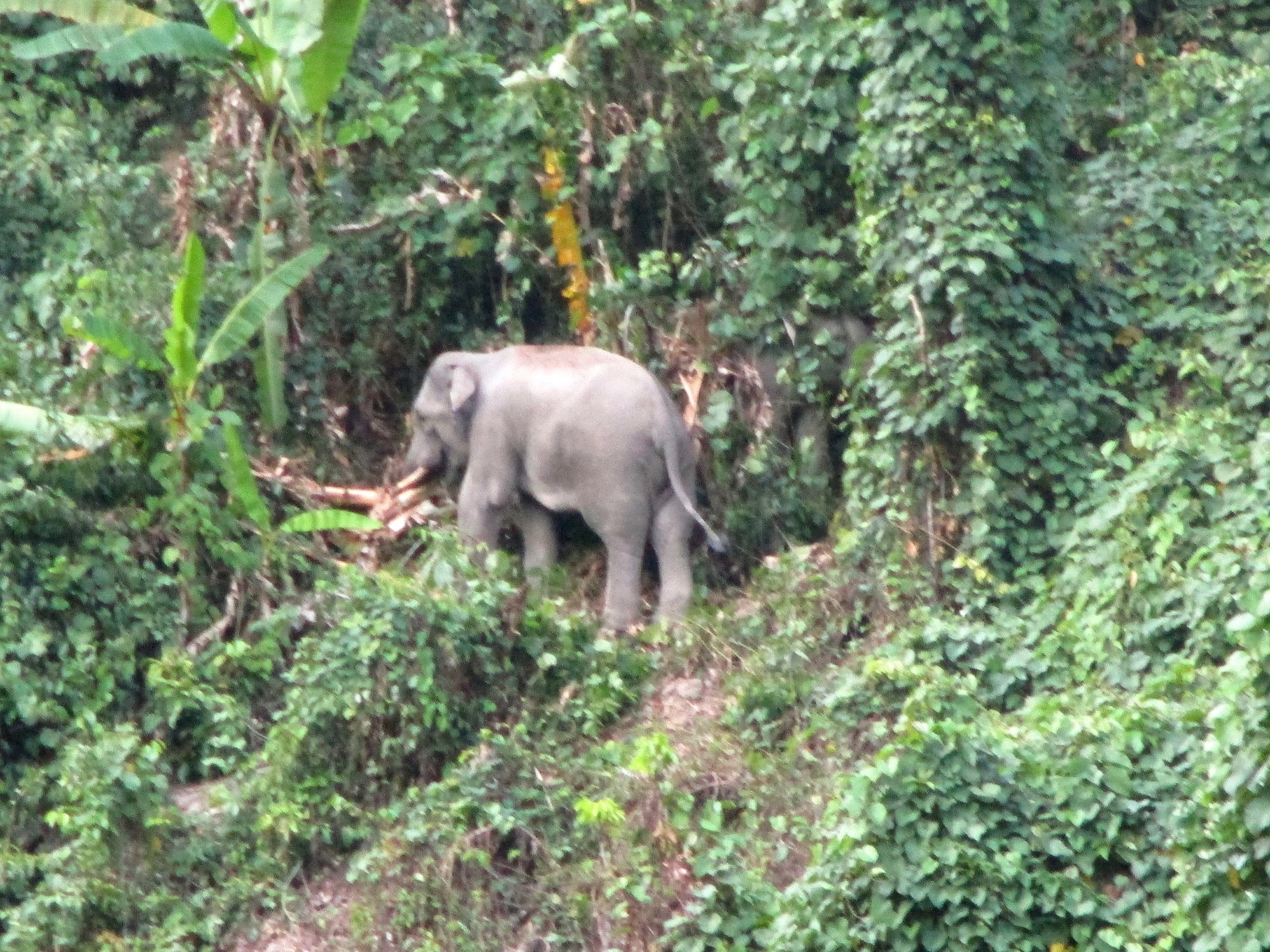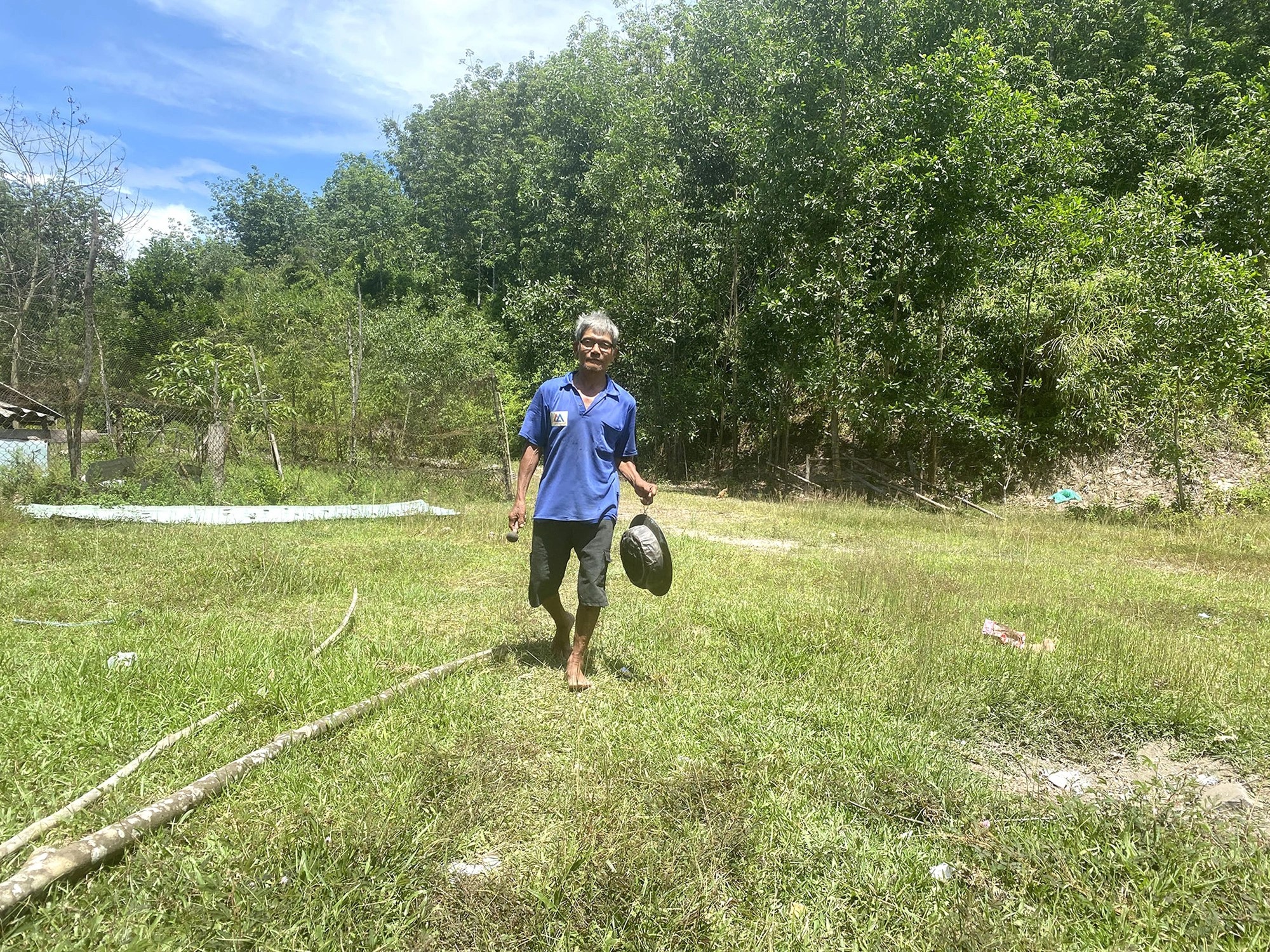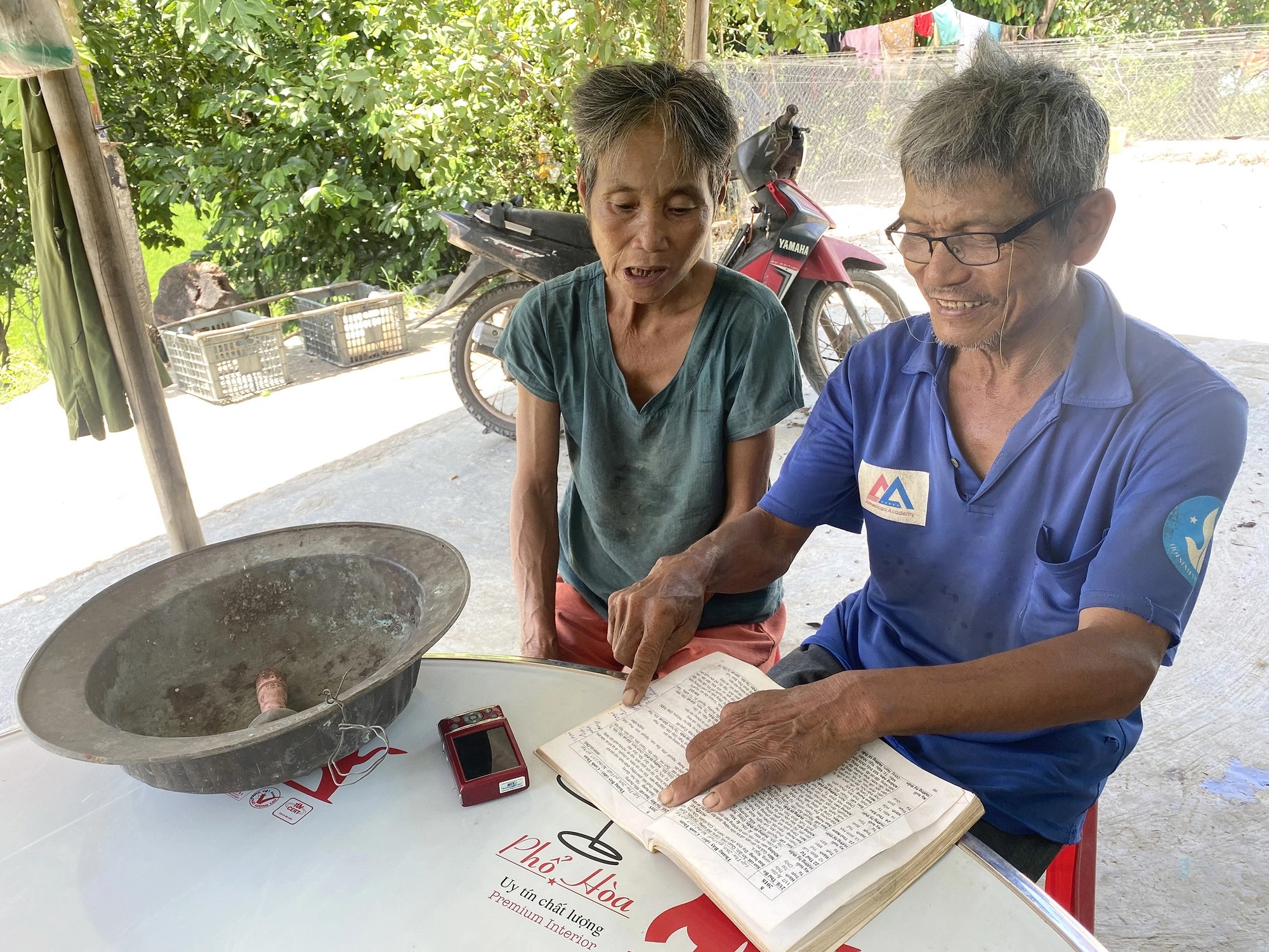The old man took the camera supplied to him to capture photos of a herd of wild elephants. He confidently declared, "Although you've recorded eight wild elephants, I'm certain there are nine."
The old man retrieved his camera and meticulously displayed a series of close-range photographs of the herd of wild elephants that had been wandering near his garden.
These photos, taken with remarkable clarity and vividness, allowed each elephant in the herd to be distinctly observed.
The herd of wild elephants in the jungle
Over time, 70-year-old farmer Nguyen Van Binh, a resident of Cam La Village in Que Lam Commune, Nong Son District, Quang Nam Province, central Vietnam has made a name for himself.
He has been invited to meet with experts specializing in elephant conservation and has been recruited by the species conservation and wild elephant habitat management board in Nong Son District to participate in patrols for the welfare of the wild elephant herds.
One day, a visiting delegation was welcomed into his home, which is situated in the buffer zone surrounding the area designated for species observation and wild elephant habitats in Nong Son.
Binh momentarily set aside the fishing net he was working on to engage with the visitors, providing them with a wealth of information about the wild elephants.
Despite his somewhat disorganized storytelling, wildlife experts recognized the value of the information he had collected about the appearance and behavior of the wild elephants he observed and photographed.
According to locals, before the establishment of the nature reserve for wild elephants in Nong Son District, sightings of the mammals in the area were commonplace.
In the past, the dense jungle teemed with elephants and various other animals, with their numbers rivaling those of the buffalo herds raised by the local populace.
|
|
| Nguyen Van Binh wields an alarm to protect his community from the encroachment of wild elephants in Quang Nam Province, central Vietnam. Photo: B.D. / Tuoi Tre |
However, in those days, the community focused solely on securing enough food for survival, with little thought given to wildlife conservation.
Due to human cultivation and development, the habitats of wild animals, including elephants, have significantly diminished, leading to conflicts between humans and wild elephants.
Binh, however, has encountered these confrontations with angry wild elephants on numerous occasions.
Despite being pursued by wild elephants for many years, he has never sought to drive them away or harm them.
Instead, he has become an active protector of these wild animals, tracking their movements to ensure their safety in the sanctuary zone.
Being deplaced because of wild elephants
In Binh's recollection, his first exposure to the problems caused by wild elephants for local residents occurred when he was managing a community in the jungle.
In those times, before the sanctuary area existed, encountering wild elephants was a source of great fear for all residents.
While many attempted to drive the elephants away, even resorting to dangerous methods that caused harm, Binh did not follow suit.
When the government offered residents of the old jungle the opportunity to relocate to areas outside the forest, Binh and his wife moved to Sam Nua and established a new home there.
However, the relentless wild elephants 'chased' them once more.
Each time they rebuilt their house, the wild elephants later demolished it. Moreover, these elephants repeatedly destroyed the couple’s crops.
Unable to tolerate the destruction wrought by the mammals, Binh and his wife decided to move their home to another location, approximately 10 kilometers from their previous venue.
Binh showed your correspondents a worn notebook he referred to as his 'perpetual calendar.'
Not every page contained notes; some were left blank, while others were filled with varied characters, with some of them even written over others.
"In July and August, the elephants often visit this area, so I noted their appearance on the sheets. On other days, I didn't note anything because they were in different locations," explained the old farmer.
Binh's house is located near the Cam La Bridge. While their neighbors opted to relocate their homes to escape the wild elephants, Binh, now in his fourth home after years of evading elephant encounters, has transformed into a guardian and protector of these animals.
He led the reporters through the back of his four-level house, which bordered the fields, pomelo trees, and a vast expanse of acacia trees, leading to the heart of the wild elephant reserve.
|
|
| Nguyen Van Binh and his wife have encountered wild elephants numerous times, diligently documenting these encounters through photographs and detailed notes. Photo: B.D. / Tuoi Tre |
"It's approximately two kilometers as the crow flies from here to the elephants' position. I can accurately pinpoint their location and even identify each of them by their unique characteristics," Binh chuckled.
Binh's wife, Man, shared a humorous anecdote about the time her husband inadvertently fed dried straws to the elephants.
"Around 2:00 am, it was exceptionally cold, and the cows were famished," she recounted.
"Binh and I ventured into the garden to feed them dried straws. As we were engrossed in this task, we suddenly heard snorts.
"When we looked up, we were startled to see two elephant heads, each larger than two enormous baskets, looming over us.
"Binh was quite shocked, but with his understanding of the animals' behavior, he advised me to stand still and continue feeding them with dried straws.
"I held my breath and kept feeding, while the wild elephants continued to eat without attacking me.
"Eventually, they departed. Even now, thinking about it leaves me breathless."
Binh works as a farmer and resides next to the forest, frequently encountering wild elephants. He also shepherd his 20 cows into the forest daily and has confronted the wild elephant herds on many occasions.
According to him, at first, the elephants would chase him upon seeing him, but he later learned to move in the opposite direction to avoid being pursued, as wild elephants do not attack people when they cannot detect their body odor or sweat.
In this manner, the old man has learned to coexist with the elephants and considers them his friends.
He can vividly recall each member of the elephant herd. A few years ago, his heart leaped with joy when he spotted a calf among the group.
Giving support to protect wild elephants
Mai Van Duong, director of the species conservation and wild elephant habitat management board in Nong Son District, jokingly referred to Binh not only as a farmer who raises cows but also as the 'elephant herdsman.'
In 2017, acknowledging his extraordinary affection for a memory of wild elephants, the board presented him with a digital camera and provided instructions on its use.
Additionally, his family received tools to alert them to the presence of wild elephants. While attending to his daily duties as a herdsman for the family's cows, Binh always keeps the digital camera in his pocket.
Over time, the old farmer has documented hundreds of pieces of information about elephant sightings, the herd's status, and the number of individuals.
Alongside these records are photographs and notes taken by him during this process, which have become a valuable source of data for the mission to protect wild elephants.
According to Binh, despite the fact that the herd of elephants has repeatedly destroyed his homes and crops, he has never held any animosity toward them.
He believes that they are similar to humans in some ways.
In his view, the jungle once belonged to them in the past.
Nevertheless, due to rapid human growth and the resulting encroachment on their habitat, wild elephants have been compelled to struggle for survival, resulting in conflicts with humans.
Director Duong emphasized the crucial role of the local community in wildlife conservation efforts.
Thanks to Binh's contributions, the community's awareness of the value of wild elephants has been transformed, giving rise to the provision of a more natural habitat for these magnificent creatures.
Like us on Facebook or follow us on Twitter to get the latest news about Vietnam!






















































